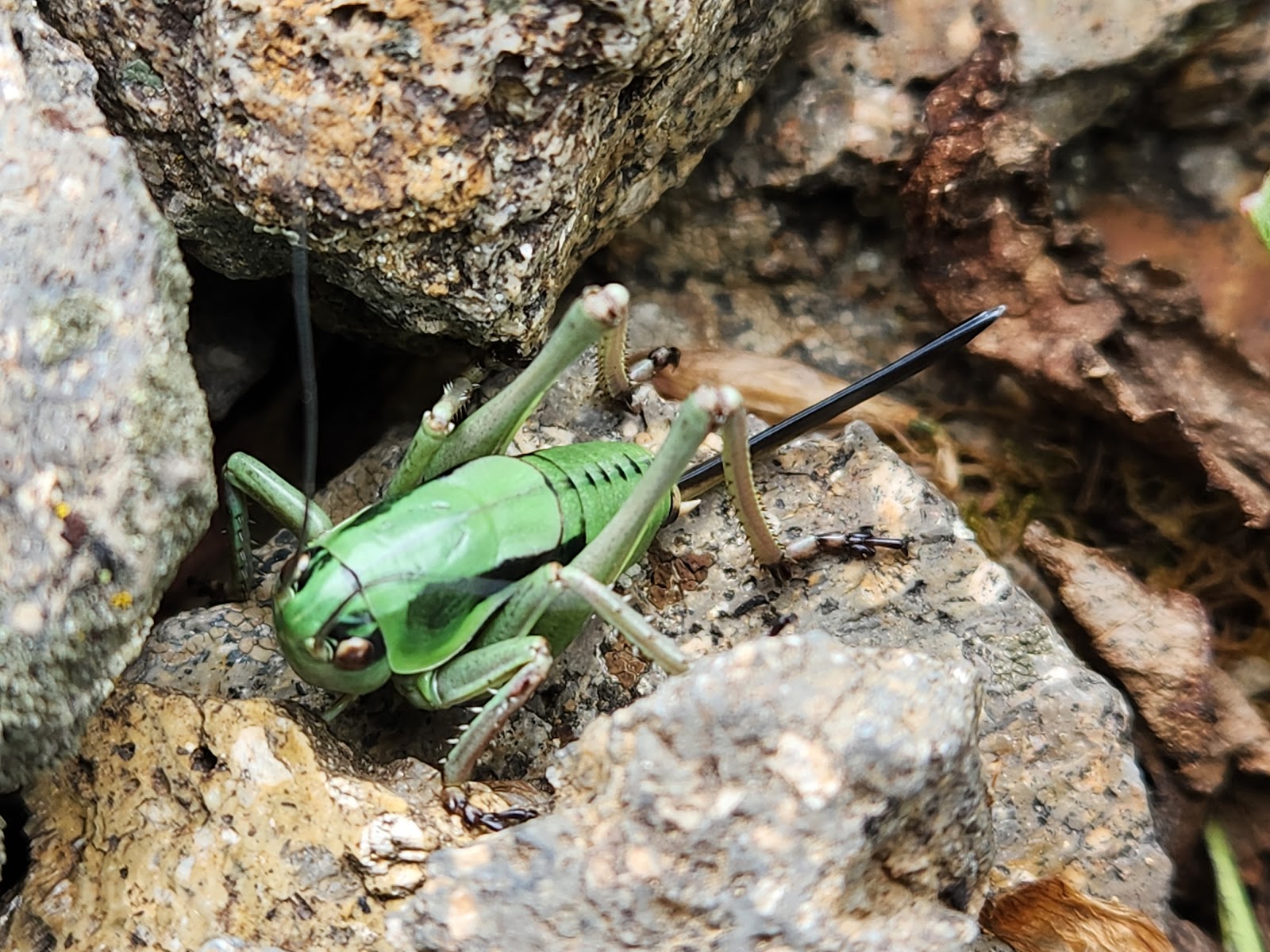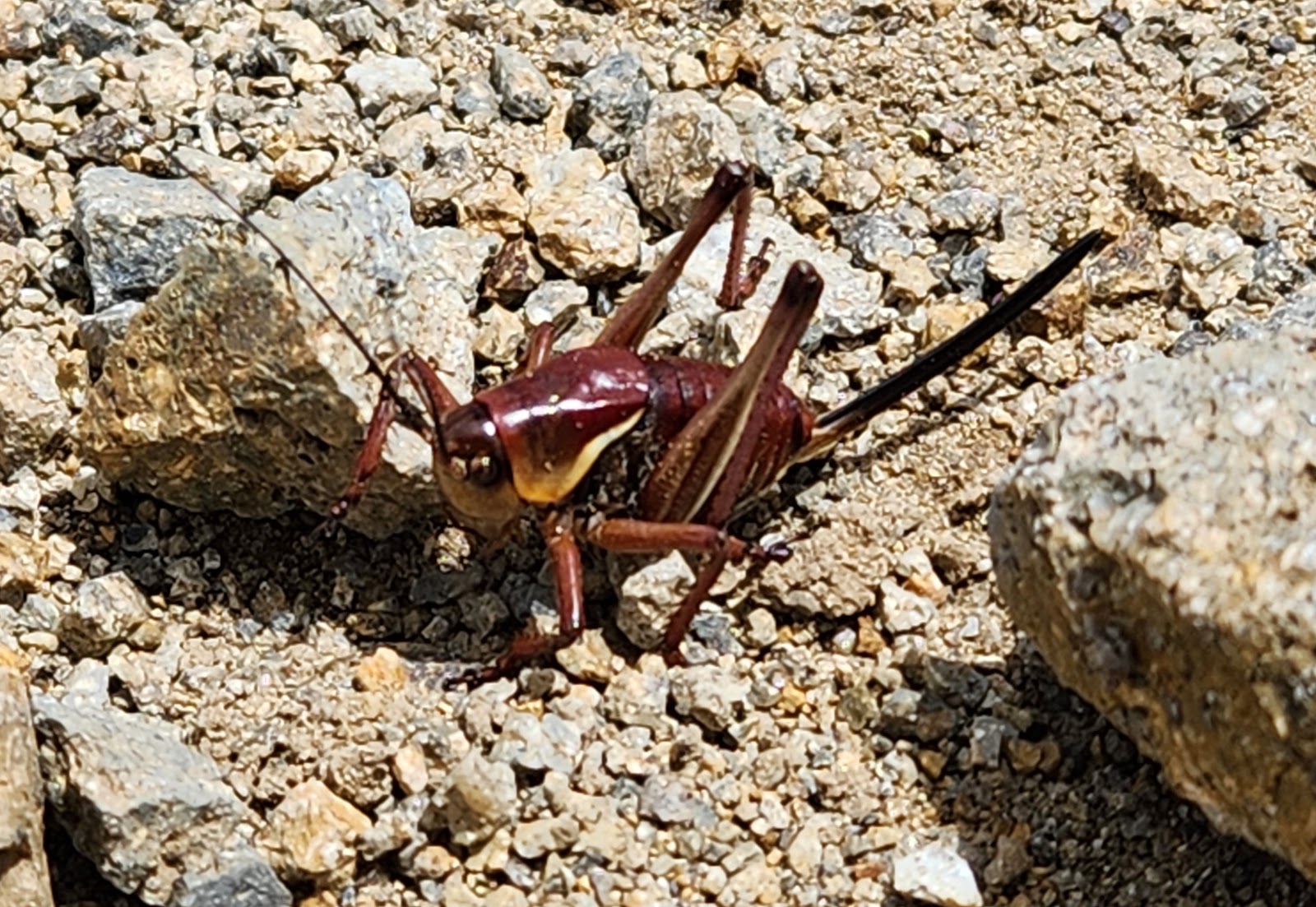The San Juan wilderness of southwestern Colorado is an alpine wonderland. The view above treeline is enough to convince anyone that you are on top of - and free of - the world. Mountain peaks, for as far as the eye can see, appear to be holding up the sky as so many stanchions of stone guarding the lower regions of Earth.
I have just spent two days in the Redcloud Peak wilderness breathing clean air and hiking at 14,000 feet - a combination that leaves me exhausted and yet full of a spiritual vitality I come to crave - a combination of sensations that I find hard to explain yet one that is so addicting to my boys, my brother, and me that we return to experience it year after year.
Every peak we climb is different and every year brings new surprises. This year (2023), the Southern Rockies experienced a wet winter, and the summer monsoon rains have been above average in many places. As a result, the wildflowers in the high country are in full show clear into August. Stopping to take breathers along the trail, my eyes wander over endless miles of peaks in all directions.
Then my eyes adjust from taking in panoramic vistas to noticing small things below my feet. There are dozens of grasshoppers walking and jumping in my vicinity. Then I notice a few that seem heavier and are not so active. Most are underneath shallow grasses and clovers. Many are bearing sword-like blades at the end of their plump bodies. The closer I look, the more I realize that they are everywhere. There must be many thousands of them within just a mile or two of where we sit.
They are Mormon crickets (Anabrus simplex) and the slopes of Redcloud Peak seem to be their favorite place on the planet. They aren’t swarming and eating each other like they do lower down when conditions are just right - and making a pest of themselves. Up here they seem to be an integral part of the alpine ecosystem.
Maybe it is the wet year that has brought them out in such numbers. Or maybe they have been happy up here for thousands of years. It is clear that the population is healthy. There seems to be a good amount of genetic diversity among the individuals, at least their many color forms seem to suggest this. Some of them are grass green, others a deep earthy red. Many are the typical olive green and brown of their cousins lower down. Some are almost black.
These darker forms make me stop to think - something that the body doesn’t naturally want to do at such heights. I have been watching insects, in the Utah and Colorado Rockies, for a handful of decades and am used to coming across the beautiful and solitary light green crickets. Sometimes these solitary individuals come in reddish or various green forms.
The longhorn cricket specialist Darryl Gwynne (along with Patrick Lorch, 2000) put it this way: “Solitary Mormon crickets do not form moving bands, have a cryptic green or brown coloration, and are found from sagebrush flats to alpine meadows. In contrast, gregarious individuals are conspicuous, dark-coloured insects from sagebrush habitats.”
This description is certainly consistent with my own experience. I recall the first time I witnessed a Mormon cricket swarm. Kathy and I had been married less than a week and were traveling in Colorado on our honeymoon. As we crossed over the state line, just a few miles east of Dinosaur National Monument, we were forced to slow down. The highway was slick with dead cricket bodies. Going slowly, I could tell that they were Mormon crickets. Some were moving methodically across the highway but many were not moving at all. They were too busy eating their smashed siblings on the road.
We got out of the car and looked around. All of them were dark. Some were a deep olive green, and some were almost black. The danger on the highway looked like it would only get worse until all the crickets were run-over and enough time passed to degrade their bodies. It was clear that the swarm wanted to move in a single direction, but as some of the crickets got smashed, the others couldn’t refuse the free protein snacks. When they stopped to eat, many of them got run-over as well, and the situation only got worse.
My first encounter with a solitary Mormon cricket was on Antelope Island (really a peninsula) on the south side of Great Salt Lake. I was a high school student (in the 1980’s) and my friend invited me to go exploring the island with him. His dad was following a community treasure hunt that he thought led them to the peninsula, and they had an extra seat in the car. I don’t think we ever found the treasure, but I do recall finding dozens of scorpions by turning over flat and partially-buried stones. I also found a green Mormon cricket at the base of some clump grass. It left an impression.
Mormon crickets are culturally important in Utah. The Church of Jesus Christ of latter-day Saints (nicknamed Mormons) has a monument to an event in Utah history when gulls came from Great Salt Lake and gorged themselves on a huge swarm of the crickets - saving their crops.
I still remember details of that solitary cricket on Antelope Island all those years ago. It was a female with a long sabor-like ovipositor (its egg laying organ). I knew enough entomology at the time to realize that it was an adult because only adult females have ovipositors. But this confused me because I also noticed that it didn’t have any wings, and I knew that adult insects (especially grasshoppers) are able to fly as adults. In fact, this is how you can tell them apart from the immature nymphs. I would later learn that this has been confusing to others as well. In fact the confusion has made its way into the story (even the myth) of Mormon crickets in Utah.
Several accounts suggest (or state outright) that the crickets flew into the Salt Lake Valley and started to devour the settlers’ crops. This is obviously an impossibility since Mormon crickets don’t have wings. When I learned about this as a freshman at BYU, my professors thought the confusion was started by accounts of the crickets descending like a “shadow of a cloud.” Coming down from the surrounding foothills, their dark bodies might suggest such an image if there were enough of them - and all accounts seem to agree that there were more than enough.
Chad Orton writes of an interesting account of a woman named Sarah Peterson salvaging her damaged crops in the 1850’s. Her husband was away from the farm serving a mission for their church when the crickets came. Orton describes their arrival writing that they, “descended upon the fields.”
The word “descended” is not necessarily incorrect in this context but it can have a couple of meanings. Perhaps it means that the crickets hopped to the valley from the surrounding hills (a likely occurrence). It could also mean that they flew in from the sky (an impossibility as we have seen). Orton did not invent the usage here. Various accounts of the story had been using the word “descend” for decades. Unfortunately, the word is sometimes changed to “fly.” My professors were suggesting that the “shadow of a cloud” had been shortened to just a “cloud.”
My guess is that the confusion comes from another place altogether. I think it is a failure to distinguish between two different orthopterans: a grasshopper and a longhorn cricket. The grasshopper being the Rocky Mountain locust (Melanoplus spretus) and the other being the Mormon cricket.
During the 19th and early 20th centuries, the American West experienced many locust swarms. These insects did fly into fields from the sky and ruined many crops throughout Utah. Jeffrey Lockwood (2004) writes engagingly of the struggles of early settlers to deal with the swarms both practically and in religious contexts.
The Rocky Mountain locust is a grasshopper and doesn’t look anything like a Mormon cricket - at least to me. But then I am an insect taxonomist and am trained to notice differences. It isn’t as big as the infamous locusts of the Old World that emerge from sub-Saharan Africa every so often to devour crops. But its overall appearance is similar: short antennae relative to the body length and long flying wings.
Looking at the accounts in Lockwood’s book, it seems that the Utah settlers knew the differences between the two kinds of insects well enough. My guess is that the later authors and motivational speakers did not. Part of the problem may be that the Rocky Mountain locust no longer exists. It went extinct sometime during the early 1900’s, whereas Mormon crickets continue to swarm into rural areas on occasion - but only by hopping along the ground.
I think there is another connection between the erstwhile American locust and Utah’s history. It has to do with the emphasis that members of the Church of Jesus Christ place on food storage - at least in Utah. Lockwood cites a couple of early Utah sermons (by Brigham Young and Heber C, Kimball) about needing to lay aside food as an expedient against locust outbreaks. These sermons used the Biblical accounts of resting the soil every seven years (and even during a 50-year jubilee). The implication made by both Young and Kimball was that the saints were not following this religious injunction. If farmers had been in the practice of storing food and resting the soil with no harvests, as the Biblical account requires, the locusts would not become such a scourge - or so it was implied.
The connection between the locusts and storing food disappeared at the turn of the 20th Century after the locust went extinct. But the emphasis placed on putting aside food for a rainy day has remained. It was preached across the pulpit during church-wide conferences when I was young (during the 1970’s and 80’s). It was less discussed as the Church became larger internationally and it became known that storing food was illegal in some nations. This didn’t stop local congregations in Utah, however, from continuing to teach about the need to store foodstuffs.
During the covid years, there was a subtle shift in this emphasis. General church leaders began again to suggest that having a store of food on hand was a wise (and inspired) thing to do. After all, the Church had never denied that its earlier teachings were out-dated. I’m not suggesting that preserving food is a uniquely Utah phenomenon, or that it necessarily presumes a Biblical commitment. But perhaps an entomologist living in Utah might be forgiven for seeing part of a religious practice tied to the biology of an orthopteran insect.
Some of these stories occupied my thoughts as I walked around Redcloud Peak discovering the crickets on the mountainside. It took me a couple of hours to get to the peak and back down to the wildflowers. But it slowly occurred to me that I was seeing several color forms and that this might be unusual. I also had to convince myself that the crickets were not swarming.
Non-swarming Mormon crickets that haven’t been startled, tend to stay in one place or only walk (or jump) when moving to another feeding location or to find a mate. This is one of the reasons they are rarely seen. The eye doesn’t normally notice camouflaged insects that don’t move. The Redcloud crickets were behaving this way. They were not moving en masse by the thousands. There may have been thousands on the mountain, but you had to go looking for them. Once you had a search image, however, they turned out to be abundant.
The fact that there were definitely non-swarming dark forms near the typically-colored and solitary green forms was certainly new to me. I have never even heard of such a thing before. Is the Redcloud population a genetically diverse group of individuals from which other forms have evolved? I’m not sure, but it seems that there is a story here that might be interesting to pursue - providing the curious researcher has the motivation to climb a few thousand feet up a mountain.
References
Bailey, N.W., D.T. Gwynne and M.G. Ritchie. 2005. Are solitary and gregarious Mormon crickets (Anabrus simplex, Orthoptera, Tettigoniidae) genetically distinct? Heredity 95(2), 166-173.
Gwynne, Darryl T. 2001. Katydids and bush-crickets, reproductive behavior and evolution of the Tettigoniidae. Comstock Publishing, Cornell University Press, Ithaca and London.
Lockwood, Jeffery A. 2004. Locust: The devastating rise and mysterious disappearance of the insect that shaped the American frontier. Basic Books, New York.
Lorch, P. D., & Gwynne, D. T. (2000). Radio-telemetric evidence of migration in the gregarious but not the solitary morph of the Mormon cricket (Anabrus simplex: Orthoptera: Tettigoniidae). Naturwissenschaften, 87, 370-372.
Orton, C. M. (2019). Those They Left Behind. BYU Studies Quarterly, 58(4), 4-47.







No comments:
Post a Comment